It would be disingenuous to boil down Anders Trentemøller’s music to a mere list of genres and artistic likenesses. The Danish multi-instrumentalist is instead best described as a sculptor of cinematically dark music, creating atmospheric, melancholy soundscapes with impeccable production. Having a multi-decade career packed with a multitude of albums, singles, and remixes under his belt, Trentemøller is the epitome of a prolific artist.
His new record, DREAMWEAVER, is another strong addition to the Trentemøller canon. It expands on 2022’s MEMORIA, centered on dreamy, lush, layered, jangly guitars drenched in reverb. Echoes of The Cure can be felt. That’s partly because the band has been such a pivotal inspiration to him since his youth. Speaking to Trentemøller further, I learned that his writing process is quite impulsive—instead of initiating recording with a plan in mind, he relies on spontaneity. Whatever inspiration has struck him, he’ll seize the moment to immortalize that energy. The songs then fall into place, almost like a puzzle—the steady and hypnotic riffs across DREAMWEAVER emerged as such. The result is a snapshot of Trentemøller’s creative headspace.
In our conversation, Trentemøller went into extensive detail about writing the songs for his new record, the gorgeous, sole vocal contributions from Icelandic singer and live band member DíSA, and the impact other musicians have had on his music.
Compared to your last record in 2022, MEMORIA, did it seem natural to continue in that dream pop direction—like, that more atmospheric sound? I think it’s something you started on that record and it bleeds into this one. Do you go consciously into an album with a certain sound in mind?
Anders Trentemøller: Yeah, no, it was actually… I think some of my earlier albums had some of the same elements, so it’s really not something I thought about. Apparently that’s where my music took me, you know? I’m always trying not to plan anything when I start a new album—I don’t think about what I’m doing, actually. It can be weird, but I’m just trying to let my feelings flow and my inspiration when it’s there, because it’s definitely not always there. So most of the time, it’s really hard work in front of my upright piano, just trying to come up with chords and ideas.
I think that my music has always had that kind of melancholic, dreamy thing to it. There are also songs that are a bit more uptempo, and of course they all have that shoegazey, dream poppy sound to it. It’s music that I’ve always been listening to and I really love that style. At the same time, I’m trying not to focus and limit myself to only one style. I started doing more electronic stuff and before that I actually did some indie stuff. So now I’m doing this, and it’s about where I am in my life and my inspirations.
Yeah, just whatever you’re feeling at the moment, and that gives you a direction to go in.
AT: Yeah, then the challenge is when I have 12 or 15 songs to see which ones can fit together as an album. That also comes quite easily for me because I think halfway through the writing process I can see a direction, then I’m inspired by the last song that I did. Sometimes I want to do something that’s quite different. If I did a very downtempo, dreamy song, I might do something with more energy, with a punk feel or something. That was also why I did the song “In A Storm” that has a more uptempo feel. I was doing that just after I did one of the most downtempo songs on the album, so it’s really based on how it’s all flowing.
Do you start to see the broader picture of the album as you’re making each song? They obviously seem to inform each other, don’t they?
AT: Yeah. I think some artists maybe have a plan or some rules for themselves—I also sometimes try to put those rules up for myself. But then very, very quickly, I just ruin it. It’s all totally not planned because it feels right. Actually, with [DREAMWEAVER], my first idea was that I only wanted to use drum machines and two specific machines, only one guitar, and some synths. But then, after two songs, I ended up doing real drums and a lot of electric guitars. So with the songs that I write, it’s those songs that kind of demand how they should sound.
I feel like, on this album especially, it’s very sculptural. There’s an anthemic tone and sense of conviction behind the songs, they sound quite boomy and have a wide soundstage. So it’s really interesting to hear that you consciously opted for more live instrumentation this time.
AT: Yeah, and that was simply also because of the opener “A Different Light.” I was super inspired by Nick Drake. I really love his way of finger-playing guitars. I felt the song was very fragile and I wanted it to be very intimate. I stopped doing it with the synth that you can hear in the middle of the song because I felt it was sounding too cold or too much like synthpop. So I ended up recording that part with an acoustic guitar and suddenly it felt much more warm and fragile, about to fall apart a little bit. The synth then comes in later and opens up.
That is also the way I see my songs sometimes—I kind of dress them up in different dresses. *laughs* Sometimes they start in one direction and can end up in a totally different mood. That can be a bit confusing sometimes, but I think that I learned to be more rough in a way and more, like, kill your darlings. Even if I worked on something for two months, if it doesn’t work for me, then I’ll just leave it and try something else. Maybe with the same song, but I’ll try a totally different approach because trying to work and work and work on a song, it can very easily be overproduced and I overthink it too much. I always go for that spontaneous idea I had on that first day or night I wrote that song, trying to capture that energy.
I understand that completely, because sometimes if you work on one thing too much, it becomes stifling. You add so much more to it that it loses its initial precious shape.
AT: Yes. You know, the funny thing is, even though I’ve been making music for 25 or 30 years now, or more, on this album I ended up having songs where I had to take a lot of parts away and delete tracks. Then, most of the time I ended up back where I started! I didn’t have to do that from the beginning. I’d think, “Why did I have to go on this journey to try out a lot of stuff?” But that’s part of the whole creative process, I think, to try out different things and then suddenly you end up where you actually started. Apparently that’s very simple for me!
Well, it’s worked out because the music is beautiful! I also noticed that there’s a lot of bass in the songs. I’m thinking like—I know you’re a big fan of them—The Cure, particularly their DISINTEGRATION material, I hear it in your album’s songs “I Give My Tears” and “Behind My Eyes.” It’s that sort of “Pictures of You” sound, which is my favorite Cure song. I have a couple questions here: Were there any instruments you actively chose to use more for DREAMWEAVER? How do you feel about your influences bleeding through your music?
AT: It is definitely no secret that I’m a huge Cure fan and I really love DISINTEGRATION. Especially for this album, I listened to the first song a lot, “Plainsong.” It’s such a fantastic way of opening an album, it’s really… Wow! I tried to capture a little bit of that magic. I’m a huge fan of Simon Gallup, the bass player of The Cure. I love the bass with the chorus and all that. I’m also a big fan of Peter Hook, so those two bands have always followed me. I’m 51, so I was a teenager in the ‘80s. So I just think their music is such a big part of me that I cannot really avoid using it in my own work.
But I’m always aware that I don’t want to be a copy of The Cure or anything. I’m definitely hugely inspired by their soundscapes and especially inspired by Robert Smith’s songwriting. I really love how he puts small melodies into the bass, guitars, and everything. So it’s not just guitar chords, but small, simple melodies played very often together with the vocals and bass to make a fantastic pop song. I’m inspired by that way of writing music. So many small parts together can sound very epic, but if you’re hearing them on their own, they are quite simple.
The track I like the most on your new album is “Nightfall.” I’d love to hear more about that one. It’s been in my rotation a lot; I love the droning, somber atmosphere.
AT: Yeah, thanks man. It is funny, because that was the first song that I wrote for the album. After that, I wrote “Empty Beaches,” which has kind of the same vibe and instrumentation, but I was also very happy about “Nightfall,” because it came to me very easily. I think I wrote the music in about three hours. I was quite inspired by a band from the States in New Mexico, they’re called Tan Cologne. They’re a fantastic duo of two women writing their own music, producing, mastering, just doing everything themselves. Their sound is a little bit like Mazzy Star—I’m also a huge fan of Hope Sandoval. There’s definitely some inspiration there too. So I wanted to do a song that was very fluid in a way and open, and as you said somber, that night feeling to it. Dreamy, but not too dreamy, you know? Something that felt quite timeless. That song actually kickstarted the whole album, the more dreamy direction, even if some of the others are quite different from that.
Maybe this came from you piecing the album together or me being a listener from the outside, but it’s almost like there’s two halves to it. It begins quite calm and tranquil at the start then proceeds to get a bit louder, but towards the end it settles down again. Did that happen naturally?
AT: It happens naturally for me most of the time, but it’s also part of arranging a song. I really like when an album has dynamic curves, you know, going up and down like waves. Also, even in the songs—you can also see a song like “Dreamweavers” starts very soft, then it builds up going into something more electronic, then it goes back into something very ambient and really goes up and down. It’s extremely dynamic but I love those contrasts. They always make it more interesting to listen to music, and it’s the same with movies for me. Especially movies like David Lynch—of course everyone mentions him—but he’s fantastic at doing a lot of layers in his movies that you can understand in different ways. What I’m trying to do with my music is to put in a lot of layers that are maybe not so obvious the first time that you’re listening to it, but maybe if you listen the fourth or fifth time, you’ll discover some small details in there.
Even “Nightfall,” I used a lot of time to make the drums sound delicate, but also quite heavy with a lot of reverb with the bass drum, something you normally don’t do because the bass will rumble a little bit. I just felt it needed to sound a bit ghostly, a little bit otherworldly. I used a lot of time on the instruments that are quite classical and normal, so I still wanted the guitar to sound like a guitar, but I added a lot of extra stereo layers and reverb delay when you’re listening, especially wearing headphones.
Having gone through the album several times already, I’ve definitely picked up on that. I also love the notion that there’s an element of progression to it, which keeps you on your toes. I wanted to ask about the opener, “A Different Light,” which you’ve previously said you have a fond appreciation for. DíSA’s vocal contribution is very beautiful.
AT: I think it’s one of my personal favorite songs on the album. That’s also why I chose it as a start, and it was one I wrote quite early in the process. I had this idea for the vocal melody and the lyrics, so when DíSA went into my studio and began to sing those notes, I was like, “Wow!” Goosebumps. We didn’t change anything. Her lead vocal was done in the first take because she was just so… I don’t know, maybe a little bit blue, you know? I think that you can actually hear that in her voice. She sang it with so much passion and holding back her emotions in a way, but because she’s doing that, you can hear there’s so much more life in her vocals.
It was just magical to see her sing that song, she’s a talented and fantastic vocalist. She’s also singing with me live, so that made it much easier for us to work together in the studio because we know each other quite well. I was super sure that I wanted DíSA to be the singer on this album because we had just toured for many months.
Yeah, I was going to mention she’s on most of the songs. I know on MEMORIA you had your partner Lisbet Fritze on vocals, and the one before that, OBSERVA, there were lots of different female vocalists. This time around though, it’s just DíSA exclusively. Whose idea was it to do that?
AT: That was also my idea because I know on my last album, MEMORIA, there was only one vocal guiding you through the album, telling a story. There’s only one human voice that you have to identify with when listening to the album. Back when I did my earlier albums, I sometimes had three, four, or five guest appearances. When I listen to those albums now, I think it’s hard to get that personal connection with the vocals on the whole album. Maybe each song worked okay on their own, but together, I really wanted to have something that was very personal and have the same vocal guide you. So I was really happy working with Lisbet and therefore I also wanted DíSA to be the only vocalist on this album—I might do the same for the next album. I think it’s a nice way to concentrate on just one vocalist and it’s easier to give the music more variety if the vocals are the same.
I’m curious as to how the new songs are going to inform your live show?
AT: We’re playing quite a lot of new songs from the new album. We just played six festival shows here in Europe in the last week, actually. We played some songs that are not the singles, so people didn’t know any of the new songs. *Laughs* It was a little bit challenging in the beginning, but later in our set we also played some of my older songs. But it is always nice for me to play the newest new stuff because I’m so used to the old stuff, and I’m really proud about our new songs.
It’s kind of hard to describe how the show is live because of course it sounds different compared to the album, but I want it to be a band feeling. It is not Trentemøller with a backing band. It is a band. That is also why I use quite a lot of time rehearsing for even more new and old songs, new versions, and production rehearsals with really cool visuals with lots of lights and stuff.
That’s great seeing it all come to life. It must be really fulfilling but also scary to have the album out in the world now?
AT: It is super scary. You know, how will the reviews be? Will people hate it or love it? *Laughs* Also because only me, my band, and very few friends have listened to the album and it’s suddenly out everywhere. But so far we’ve also released three singles, so I kind of got used to the songs being out there. Of course, I’m doing music for my own pleasure, but I also want it to be listened to. Playing live and touring is a very direct way of getting feedback from the listeners because you don’t really have contact with people listening on Spotify or anything, but you’re being faced by people in a club or venue. That’s really one-to-one, you know? That is something I really love after being alone here in my studio for years sometimes, just isolated doing my own stuff and suddenly playing in different countries. It’s a real culture shock to go from the studio to being on the road.
I want to ask about the art direction too. I love the whole flower motif going on, where does it come from?
AT: Yeah, that is actually quite a funny story. Do you know the Danish band Mew?
Oh yeah! I do.
AT: The singer of that band, his name is Jonas Bjerre. I was Googling him because I wanted him to do some photos for the album, but then another guy came up who has the same name and is also Danish, but he’s an architect and takes photos in his spare time. He’s made beautiful pictures with flowers and wires holding them. It somehow fitted so well to the theme of this album, which is about a wild love that you cannot really control. These wires and the flowers represent the natural wild love, this force that you cannot really control. I loved the whole atmosphere of the photos that fit well to my music. I just found him on Instagram and wrote to him, “I really love your photos, can I use them for my album?” He was like, “Yeah, you can use them.” Sometimes it’s just so easy writing to someone on Instagram, and then we talked without having any manager or label involved, just me and him. That was really nice.
You can check out DREAMWEAVER on Bandcamp, and follow Trentemøller for updates over on Instagram
Cover photo by Philippe Mazzoni



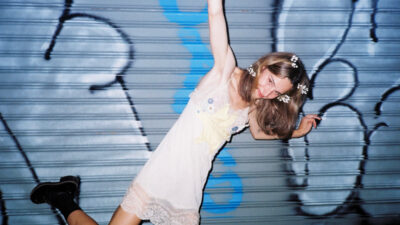
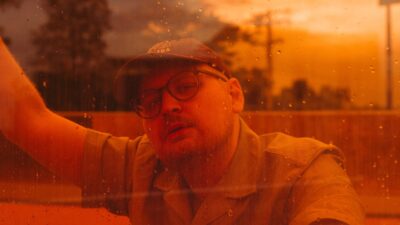
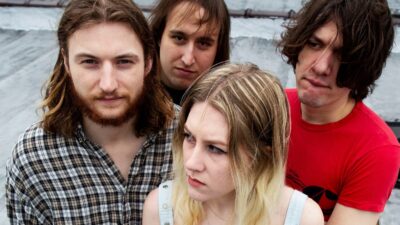
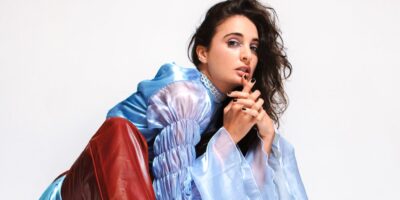
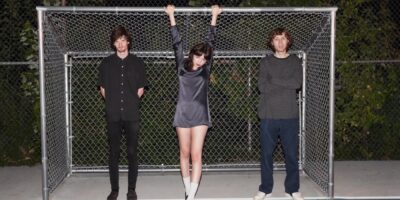
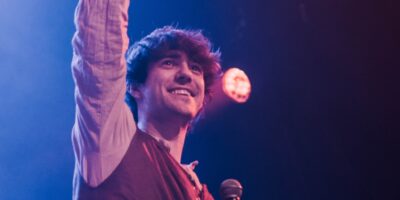
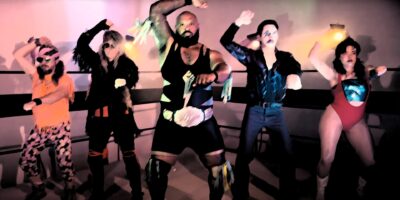
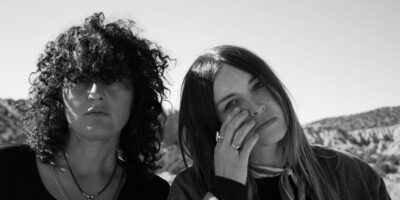

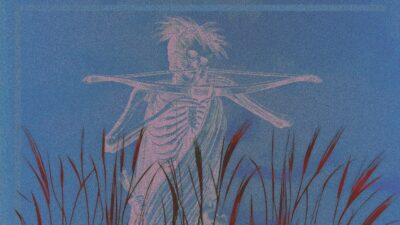
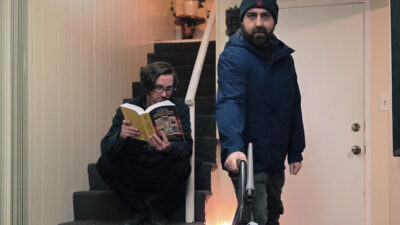
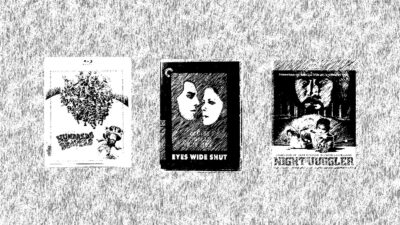
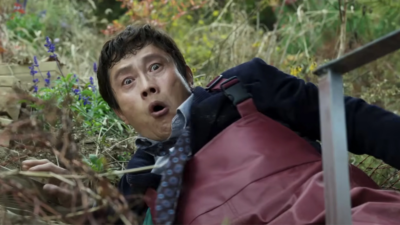
Comments